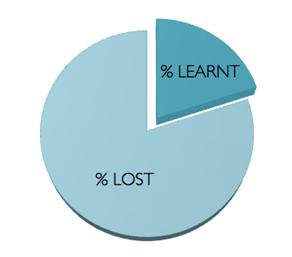
Unique
Global
One on One
Guaranteed
What is the Transfer of Learning aka “Learning Transfer”?
Our firm belief is that any investment in training must create tangible business benefits – so why is only 20% of learning actually transferred back to the workplace? And how can we change that statistic? Transfer of learning is the missing link, and Turning Learning into Action™ is a proven learning transfer methodology that has been solving this problem for over a decade.
Participants
Programs delivered
Hours on the phones
You can trust our methodology. Many do.

Why is effective learning transfer so important?
“Just as a pole vaulter uses a pole to catapult themselves over a horizontal bar, learning can propel an individual forward and upward.” – Emma Weber, Author and Founder of Lever – Transfer of Learning

In 2010 McKinsey & Company found that only 25% of managers surveyed felt training programs measurably improved business results. Clearly their research is showing us that we have a problem.Most people in the L&D industry are fully aware of training’s dismal record in affecting behavioural change, with a growing recognition that the missing link is the transfer of learning.
Organisations believe they are addressing transfer of learning issues when they adopt activities such as…

These and other tactics currently used in an attempt to improve training effectiveness, is testament to the fact that people recognise the problem. But the question is, do they work?
Well, not often.
However, we’ve been trying to get this model to work since the 90s – with little success. Expecting managers to be able to create accountability is unrealistic – particularly without proper training in a proven transfer of learning methodology. They simply don’t have the tools, time or training to make it a reality.
While the various initiatives mentioned may be designed for change, unless individuals are held accountable to themselves using specific, structured reflection over a period of weeks these initiatives fail. To create sustained employee change we propose a much more robust and a truly holistic approach – Turning Learning into Action™.

The keys to unlocking the full potential of your training programs
Organisations don’t need to start from scratch or find new training suppliers; they just need to shift their perspective to include a transfer of learning methodology. Do that and the training ROI would be of interest to even the most cautious of investors.




